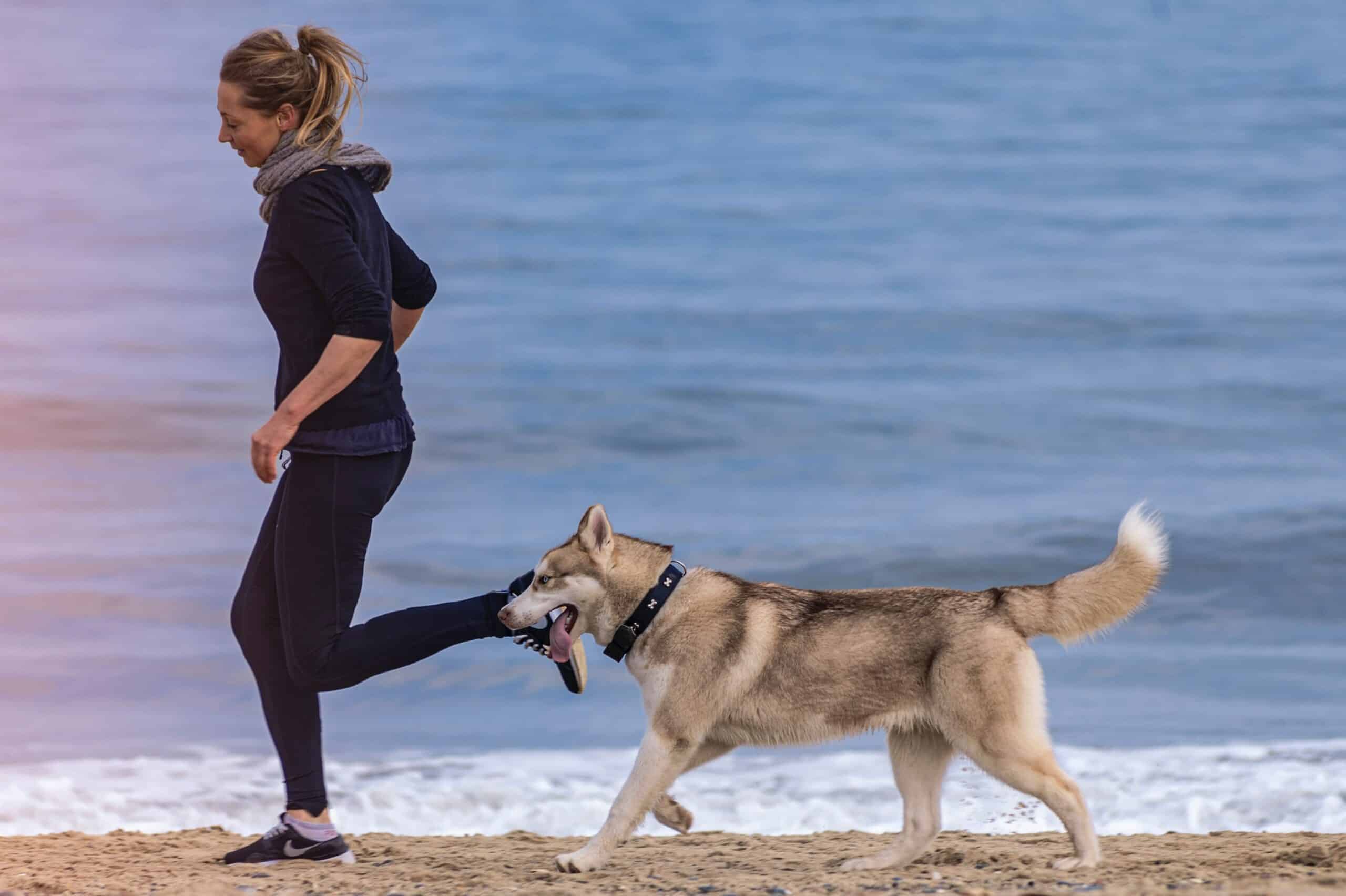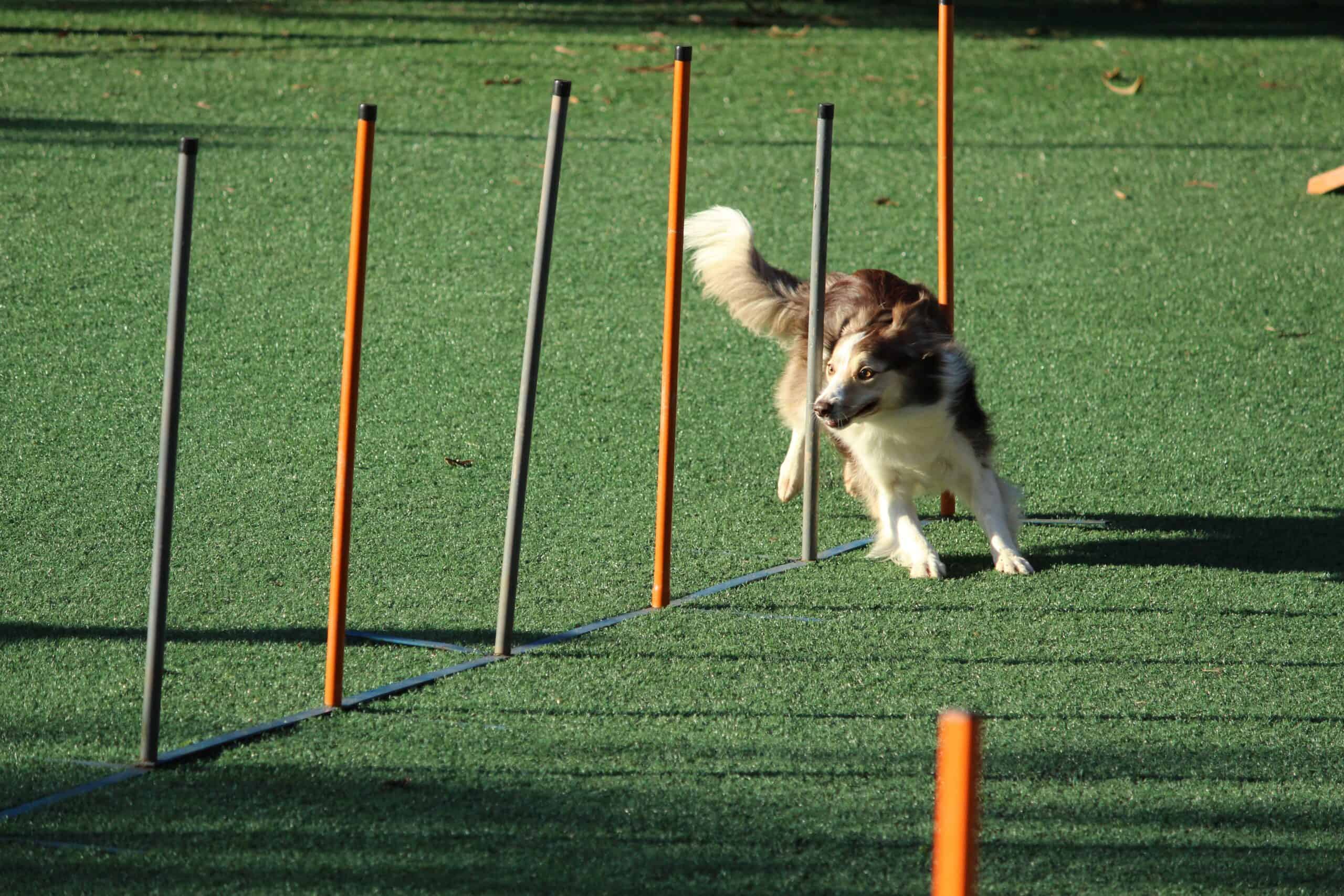Photo by Magdalena Smolnicka from Unsplash
Imagine a world where your furry best friend is as healthy and happy as they can possibly be. A world where every tail wag is more vigorous, every bark more cheerful, and every nap more contented. This isn’t just a distant dream—it’s a reality that can be achieved through the simple yet profound act of exercising with your dog. Each stride taken together strengthens not just muscles, but the bond between you and your four-legged companion.
Understanding Your Dog’s Exercise Needs
Several factors play a crucial role in determining how much and what type of exercise is best suited for your furry friend. The breed of your dog is crucial. Various dog breeds exhibit distinct energy levels and exercise needs. For instance, a Border Collie will have different needs compared to a French Bulldog. It’s essential to refer to an online resource on dog breeds to get specific information.
Age is another critical factor. Puppies and younger dogs usually have more energy and thus require more exercise, while older dogs might need more gentle, less strenuous activities. Additionally, your dog’s current health status can influence the type and amount of exercise they should be doing. Overexerting a dog with health issues can be harmful.
The risks of inadequate exercise are manifold. Lack of sufficient physical activity can lead to obesity, joint problems, and other health issues. It can also contribute to behavioral problems stemming from pent-up energy.
Signs that your dog might not be getting enough exercise can include excessive barking, restlessness, weight gain, and destructive behaviors. Monitoring these signs is crucial in maintaining your dog’s health and happiness.
Types of Exercise for Dogs
When it comes to keeping your dog fit and healthy, variety is key. Different types of exercises not only cater to your dog’s physical needs but also keep them mentally stimulated and engaged. Here are some popular and effective ways to exercise your dog:
- Walking: The most basic yet essential form of exercise for dogs. Regular walks help maintain your dog’s weight, improve cardiovascular health, and reduce behavioral issues. It’s also a great opportunity for them to explore and socialize.
- Running and Jogging: For more active breeds, running or jogging can be an excellent way to burn off extra energy. However, it’s critical to build up their endurance gradually and be mindful of the impact on their joints, especially for larger breeds.
- Interactive Play: Activities like fetch, tug-of-war, or hide-and-seek engage your dog’s mind and body. These games can be adapted to suit your dog’s age and fitness level and are perfect for strengthening your bond.
- Swimming: For breeds that enjoy the water, dog swimming is a low-impact exercise that’s excellent for dogs with joint issues or arthritis. It’s a full-body workout that is both fun and refreshing.
- Dog Sports: Participating in dog sports like flyball, disc dog, or tracking can be highly rewarding and enjoyable. These sports not only provide physical exercise but also offer a sense of purpose and teamwork.
Creating a Balanced Exercise Plan
Designing a balanced exercise plan for your dog is crucial for their overall health and happiness. Here are steps to create a routine that fits your dog’s specific needs:
- Assess Your Dog’s Needs: Consider your dog’s breed, age, health, and energy level. For instance, high-energy breeds might need more intense exercise, while older dogs may require low-impact activities. Consulting with a vet can provide guidance tailored to your dog’s unique requirements.
- Gradual Progression: If your dog is not used to regular exercise, start slow and gradually increase the intensity and duration of the activities. This approach helps prevent injuries and allows your dog to build stamina and strength over time.
- Mental Stimulation: Remember that mental exercise is just as important as physical activity. Incorporate training sessions, puzzle toys, or scent work into their routine to keep their mind sharp.
- Monitor and Adapt: Pay attention to how your dog responds to the exercise routine. Look for signs of fatigue or discomfort, and be ready to adjust the plan accordingly. As your dog ages or their health changes, their exercise needs will also evolve.
- Include Rest Days: Just like humans, dogs need time to rest and recover, especially after intense activities. Ensure your dog has ample downtime and a comfortable space to relax and rejuvenate.
Safety and Health Considerations
Photo by Murilo Viviani from Unsplash
While regular exercise is essential for your dog’s health, it’s equally important to approach it with safety and health considerations in mind.
- Recognize and Avoid Overexertion: Watch for signs of exhaustion in your dog, like excessive panting, slowing down, or reluctance to continue. Overexertion can lead to heatstroke, especially in hot weather, and can be particularly dangerous for brachycephalic breeds (short-nosed dogs like pugs and bulldogs).
- Stay Hydrated: Always ensure your dog has access to fresh water before, during, and after exercise. Dehydration can be a serious risk, especially in warmer temperatures.
- Proper Nutrition: A balanced diet is crucial for maintaining your dog’s energy levels and overall health. The right nutrition, including understanding specific needs like a French bulldog’s food requirements, supports their physical activity and aids in recovery.
- Warm-Up and Cool-Down: Just like humans, dogs benefit from a warm-up before intense activity and a cool-down period afterward. This can include gentle walking or light play to gradually increase or decrease their heart rate.
- Check Paw Health: Regularly check your dog’s paws for cuts, sores, or signs of wear, especially after walking on rough surfaces or in extreme temperatures. Consider protective gear like dog booties if necessary.
- Regular Health Check-ups: Regular visits to the vet are essential to ensure your dog is fit for the level of exercise you’re providing. This is especially important for dogs with existing health issues or those advancing in age.
- Adapt to Weather Conditions: Be mindful of the weather, adjusting exercise routines in extreme heat or cold. Some dogs are more susceptible to weather conditions than others, so it’s crucial to adapt accordingly.
Wrapping Up
The journey of creating and maintaining an exercise routine for your dog is about much more than physical health—it’s about enriching their life and deepening the bond you share. Through thoughtful, safe, and varied activities, you provide your furry friend with the best possible care, ensuring they lead a happy, healthy, and fulfilled life.


